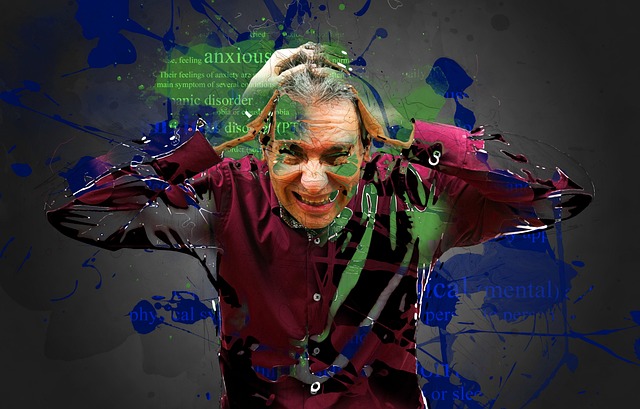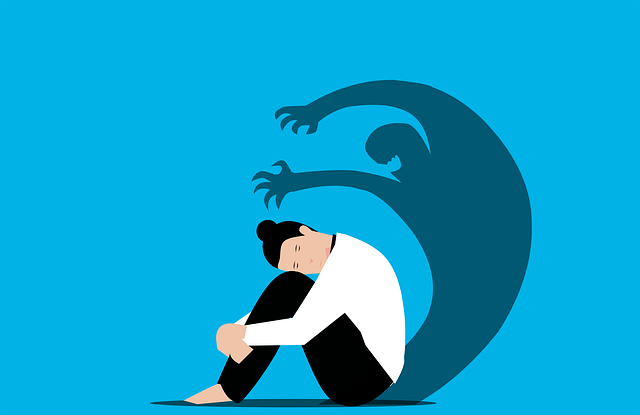Stress and anxiety, often signs of underlying anxiety disorders like GAD, Panic Disorder, or Social Anxiety Disorder, can be effectively managed through a multi-faceted approach. This includes cognitive-behavioral therapy (CBT) for thought pattern modification, mindfulness practices for present-moment awareness, and lifestyle changes such as exercise, balanced nutrition, and sleep. Early intervention, personalized treatment plans, support systems, and professional help from specialized therapists are key to successful anxiety treatment.
Stress and anxiety disorders are prevalent mental health concerns, yet manageable through effective therapy. This comprehensive guide explores various aspects of anxiety management, from understanding common causes and triggers to different therapeutic approaches. We delve into evidence-based treatments like Cognitive Behavioral Therapy (CBT), mindfulness practices, lifestyle adjustments, and the crucial role of support systems. Additionally, we offer insights on seeking professional help, emphasizing the importance of finding the right therapist for personalized anxiety treatment.
Understanding Stress and Anxiety Disorders

Stress and anxiety are normal responses to challenging situations, but when they become persistent and overwhelming, they can signal an underlying disorder. Anxiety disorders, such as generalized anxiety disorder (GAD), panic disorder, or social anxiety disorder, are among the most common mental health concerns worldwide. These conditions involve excessive and uncontrollable worry, fear, or discomfort that significantly impacts daily functioning.
Effective anxiety treatment often involves a combination of therapeutic approaches, including cognitive-behavioural therapy (CBT), mindfulness practices, and sometimes medication. CBT helps individuals identify and challenge unhelpful thought patterns and behaviours associated with anxiety. Mindfulness techniques teach present-moment awareness, enabling people to manage their symptoms by accepting and regulating emotions without judgment. Early intervention and a personalized treatment plan are crucial in managing stress and anxiety disorders successfully.
Common Causes and Triggers of Anxiety

Anxiety, a widespread concern, often stems from various factors and triggers that can vary greatly from person to person. Some common causes include genetic predisposition, where individuals may be more susceptible to anxiety disorders due to inherited traits, and environmental influences such as stressful life events, traumatic experiences, or significant changes like moving or losing a job.
Specific triggers can be daily stressors like work pressures, financial worries, or health issues. Social interactions and relationships can also play a role; public speaking, social gatherings, or even small talk might induce anxiety. Certain phobias, such as fear of heights or closed spaces, are another category of triggers. Moreover, some individuals experience anxiety as a result of physical health conditions or the side effects of medications. Identifying these causes and triggers is a crucial step in effective anxiety treatment.
Different Types of Anxiety Treatment Therapies

Anxiety treatment therapies come in various forms, each tailored to address different types and severities of anxiety disorders. Cognitive Behavioral Therapy (CBT) is one of the most common and effective approaches, focusing on identifying and changing negative thought patterns and behaviors that contribute to anxiety. This therapy helps individuals challenge their distorted beliefs and replace them with more realistic, positive thoughts, thereby reducing anxious feelings. Another popular method is Exposure Therapy, which involves gradual exposure to feared situations or objects in a safe environment. By facing their fears repeatedly, individuals learn to manage their responses and reduce the intensity of their anxiety reactions over time.
Additionally, Mindfulness-Based Therapies have gained prominence for their ability to foster present-moment awareness and non-judgmental acceptance of thoughts and feelings. Techniques like meditation, deep breathing exercises, and yoga help individuals detach from anxious thoughts and develop a greater sense of calm. Interpersonal Therapy (IPT) is also beneficial, especially for social anxiety disorders, as it addresses relationship issues and communication challenges that contribute to one’s anxiety. Each therapy offers unique benefits and may be combined with other techniques to provide comprehensive anxiety treatment tailored to the individual’s specific needs.
Cognitive Behavioral Therapy (CBT): A Step-by-Step Guide

Cognitive Behavioral Therapy (CBT) is a structured and goal-oriented approach to anxiety treatment, focusing on identifying and modifying negative thought patterns and behaviors. The process involves several key steps. First, individuals work with a therapist to understand their unique triggers and challenges related to stress and anxiety. This often involves keeping a mood journal to track thoughts, feelings, and situations. Once identified, these triggers are then challenged and replaced with more realistic and positive thinking.
Therapists guide clients through cognitive restructuring, helping them recognize irrational beliefs and replacing them with evidence-based alternatives. This step is crucial in managing anxiety, as it empowers individuals to reframe their perspectives. Through this process, CBT equips people with tools to cope effectively, enhancing their ability to manage stress and anxiety over time.
Mindfulness and Meditation Techniques for Calming Anxiety

Mindfulness and meditation are powerful tools in the arsenal of anxiety treatment. These practices encourage individuals to focus on the present moment, observing their thoughts and feelings without judgment. By cultivating a non-reactive mindset, one can disrupt the cycle of anxious thoughts that often spiral into overwhelming worry.
There are various techniques to explore, such as guided meditation, where a calm voice leads you through a peaceful journey, or mindfulness exercises that prompt awareness of bodily sensations and breathing. Regular practice has been shown to reduce symptoms of anxiety, promote emotional balance, and enhance overall well-being, offering a natural and effective way to manage anxiety treatment alongside other therapeutic approaches.
Lifestyle Changes to Reduce Stress and Anxiety

Stress and anxiety can be significantly reduced through simple lifestyle changes. Regular exercise is a powerful tool in managing both, as it releases endorphins that boost mood and decrease stress hormones. Incorporating activities like yoga or meditation into daily routines can also help calm the mind and body, providing a sense of peace and clarity.
Additionally, mindfulness practices such as deep breathing exercises and focusing on the present moment can effectively ease anxiety symptoms. A balanced diet rich in nutrients supports overall mental health, while adequate sleep is crucial for managing stress. Limiting caffeine and alcohol consumption, known triggers for anxiety, can further contribute to a calmer lifestyle. These changes not only reduce anxiety but also enhance one’s overall quality of life, making them essential components of any anxiety treatment plan.
The Role of Support Systems in Anxiety Management

Support systems play a pivotal role in anxiety management, serving as a crucial pillar alongside professional therapy for effective anxiety treatment. Strong social connections offer a sense of belonging and emotional validation, helping individuals combat feelings of isolation that often accompany anxiety disorders. Having a reliable network allows people to share their struggles, gain different perspectives, and receive practical support during challenging times. This can range from listening ears, comforting words, or even assistance in managing daily tasks, all of which contribute to a sense of empowerment and resilience.
Furthermore, support systems facilitate social engagement, which is essential for mental well-being. Participating in social activities, hobbies, or community groups provides opportunities for distraction, enjoyment, and the exchange of positive emotions. These interactions can distract from anxious thoughts, boost self-esteem, and foster a sense of purpose—all valuable tools in managing anxiety symptoms over the long term. Thus, building and maintaining supportive relationships is an integral aspect of holistic anxiety treatment.
Seeking Professional Help: Finding the Right Therapist

When managing stress and anxiety, seeking professional help from a qualified therapist can be a game-changer in your journey to recovery. It’s important to remember that everyone’s experience with anxiety is unique, so finding the right therapist for you is crucial. Look for therapists specializing in anxiety treatment who use evidence-based methods like cognitive-behavioral therapy (CBT), mindfulness practices, or other tailored techniques.
During your search, consider factors such as their credentials, experience, and approach to therapy. It’s beneficial to find someone with whom you feel comfortable sharing personal experiences. A good therapist will create a safe, non-judgmental space, actively listen to your concerns, and work collaboratively with you to develop strategies for managing anxiety. This partnership can significantly enhance your overall well-being and quality of life.
